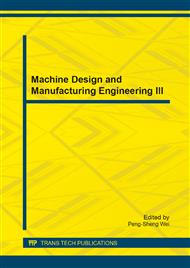p.431
p.435
p.440
p.449
p.454
p.458
p.467
p.472
p.477
Screw Fixing Fracture and Fatigue Failure on Particleboard Surface Using Different Style of Screw Insertion Technique
Abstract:
Particleboard jointing during screw fixing activities weakens the furniture, kitchen and household joinery. Screw jointing on the particleboard surface contribute to the particleboard fracture. Fracture on the particleboard surface will promote failure in jointing. This study was done to determine the effect of applying different style of screw insertion technique on fracture and fatigue failure. Three different style of screw insertion technique applied was self-drilling, pilot-hole and pilot-hole with countersunk (P+CSK) insertion technique. From the study, applications of P+CSK screw insertion technique caused highest number of damages. 57% of common chipboard screw samples were damaged when P+CSK screw insertion technique was used. Most fracture failure is the type 6 mode. There is no significance difference in number of damages for self-drilling insertion technique and pilot-hole insertion technique. Therefore, self-drilling insertion technique, which is the insertion technique used by kitchen cabinet installer was preferable due to the ease of handling during screw insertion.
Info:
Periodical:
Pages:
454-457
Citation:
Online since:
July 2014
Authors:
Keywords:
Price:
Сopyright:
© 2014 Trans Tech Publications Ltd. All Rights Reserved
Share:
Citation:


